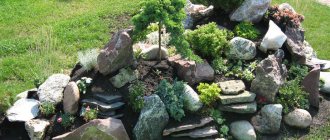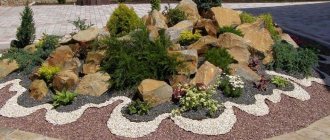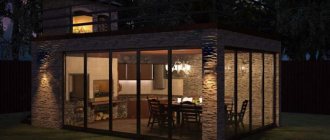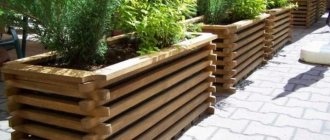A vertical flowerbed for petunia with your own hands has gained great popularity among lovers of growing flowers. This versatile and compact landscaping option will be especially appropriate in small areas. With its help, you can effectively delimit free space and increase the decorative effect of the local area and garden. The best decoration for vertical flower beds is petunia in a variety of shades. Anyone can make such a flower garden with their own hands - you need to know the basic subtleties of creation, what materials to use, and what varieties to grow.
Petunia varieties for vertical flower beds
Vertical flower beds of ampelous petunias look especially impressive in landscape design. Their main advantage is their unusual colors and unusually prominent peduncles. During the growing season, the plants dramatically fall down; the length of the shoots can reach 1.2 m.
Under natural conditions, petunias are perennial plants, but in floriculture they are presented as annuals. They attract attention with their large flowers and variety of shades.
When growing petunia, plantings should not be allowed to become dense, otherwise there is a high probability of it becoming infected with pathogenic microorganisms.
There are specimens in a two-color design; the petals may have a beautiful border, separate elements, or a star-shaped pattern of a different color. Thanks to the huge range of petunia varieties, choosing the right option will not be difficult. If you use several bright colors, you can create an original composition.
Advice! When arranging vertical flower beds, it is better to give preference to varieties of petunias whose height does not exceed 30 cm.
Among the most popular varieties of petunias for a vertical flower garden are:
- Multi-flowered, characterized by small flower sizes and a huge number of them. It is chosen for its high degree of resistance to adverse environmental factors, sudden temperature changes, and drought. In addition, this type of petunia does not require special care.
- Large-flowered, having double flowers or with fringe. The diameter can be 12 cm. The advantages of the variety include high decorativeness, and the disadvantages are sensitivity to precipitation. When exposed to heavy rain, plants are injured, lose turgor, and lose their attractive appearance. Large-flowered petunia looks great on hanging flower beds used to decorate balconies and terraces. The main thing is that the flowers should be under a canopy and should not be exposed to rain.
- Floribunda is in demand among gardeners due to the formation of a huge number of flowers, albeit small ones. A wide range of shades and undemanding conditions for growing are the determining factors when choosing plants for decorating vertical flower beds, of any design.
- Ampelnaya. This is the most common type of petunia when organizing landscape design. They are advantageous to use as main plants, since the stems grow strong and long. It is best if hanging varieties are used to improve frame flower beds. They are used very rarely for suspended structures.
Compatibility of petunia with other flowers
Petunia is good no matter how you plant it. To create a circular bed of petunias, you can use only one variety of one color, for example, only hot pink or purple flowers. Carefully whitewash the border and you will have a wonderful flower bed.
One of the simplest and most effective plantings of petunias is to plant plants of different colors in even rows. With the right combinations, a luxurious floral carpet is created

A beautiful round flowerbed with a central composition - a white border highlights the edging of large yellow marigolds. Three colors of petunia were used - hot pink, burgundy and white
Petunia also looks good in combination with other flowers - begonia semper florens, snapdragons, gillyflowers, and crops with decorative leaves. It combines beautifully with marigolds, especially if large orange or yellow marigolds are planted along the edge of the flowerbed.
Recent Entries
5 working ways to use tar in the garden 7 indoor plants that help you get married even in adulthood Indoor plants that can bloom in trouble
At the beginning of summer, pansies and primroses bloom - this is also a good neighborhood for petunia. A combination in a flowerbed with bulbous plants - hazel grouse in the center, or lilies, irises, hyacinths and tulips - also looks good. Petunia grows well in both sun and partial shade, so it is also suitable for decorating semi-shady areas of the garden, especially in company with hostas, ornamental grasses or Virginia Tradescantia. If you want to plant petunia in flowerpots, it can be successfully combined with pelargonium or fuchsia (although fuchsia is much more whimsical), or with balsam.
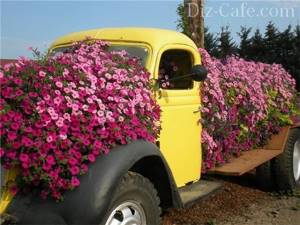
It is enough to show your imagination, and you can create an unusual flower bed even in an old car, after updating it and painting the cabin

Today in landscape design everything original is welcomed. Why not use the hollow of an old tree as a planting site for hanging petunia. The composition is a sight for sore eyes!
Types of vertical flower beds
At its core, a vertical flower bed is a structure made using containers, boxes and other improvised means in which soil substrate can be laid and ornamental crops can be planted. There are several varieties of vertical flower gardens, each with its own characteristics:
- Ground version. To arrange a flower bed, use a mound of soil and stones laid in the shape of a pyramid. A striking example of such a structure is the alpine slide; there are no restrictions on size.
- Phytowall. The basis is a frame fixed on any vertical plane. Such an original screen of climbing crops can decorate any unsightly wall of an outbuilding, residential building, or gazebo.
- Hanging type. The basis of the flower bed here will be any suitable container such as a pot, bucket, box, container. They are fixed on ropes or with wire material on the wall of the house, fence, tree, veranda. Despite their small capacity, such hanging flower beds fit perfectly into the design.
- Wall-mounted, which are used mainly for planting low-growing varieties of petunias. This category includes all kinds of flower beds that are installed on a vertical plane. Moreover, they are arranged more in length than in height.
Important! Given the limited free space, it is better to plant crops with a compact root system and low-growing ones in vertical flower beds.
How to create a petunia flower bed
The owners certainly decorate their private yard with flowering crops. According to aesthetic rules, the decoration of the farmstead is not even beds, but decorative garden plants. To prevent them from spreading throughout the entire area and taking up too much space (it would be a shame to uproot the cherished beauty!), they are limited to flower beds. The result is bouquets that bloom from early spring until late autumn. It depends on what crops to plant them with.
To make the flower beds in front of the house look bright, it is worth using flowers from hot countries in their creation. This is where the real festival of colors lies! And it’s not for nothing that petunia, a native of South America (more precisely, Brazil), is so loved to be grown as an ornamental flower crop. Its flowers are painted in rich shades of red, pink, orange, lilac and spotted white... The cup size of the petals is small and there is also large. Why not suitable planting material?
So, having decided on the type of flower, select the floral range. The flowerbed can be one color, or maybe with a gradient transition from dark to lighter color. Which form of drawing should I choose? Concentric circles, contrasting stripes, “petals” of a large flower, geometric shapes and generally fantasy patterns invented by you personally. The main thing is that the pattern is clearly visible from the side.
Although petunia is also perennial in nature, the annual form of the crop is common in floriculture. So even better. Each year you can create different patterns. In different colors.
Along with erect stems, some varieties of petunias have curly stems. It is also beneficial to use such mini-lianas in flower beds. For a multi-stage design in combination with straight stems, vines are very useful.
The root system of petunias is such that it does not require large spaces or containers. It will take root well in small flowerbed forms. Even in the hollow of an old tree or in a hollowed out stump. Landscape designers recommend unusual solutions! Petunia also feels great as a flowerpot.
Petunia goes well with other plants. Compositions in combination with gillyflowers, snapdragons, marigolds, and begonias will look impressive.
Petunias are not afraid of heat. They have immunity. But, like plants of a subtropical climate, they prefer abundant watering (in no case a swamp). It is better to plant these flowers as seedlings and in sunny areas, but they will also accept partial shade.
Petunia is one of the most suitable and unpretentious plants for vertical flower beds.
How to make a vertical petunia flowerbed
To make a vertical flower bed for petunias, chain-link mesh, wooden/plastic containers, sewer pipes, and pallets are used. The execution process does not cause any particular difficulties if you adhere to a clear algorithm of actions.
From wooden boxes
To build a beautiful vertical flower garden from wooden boxes, which 5 months after planting the petunia will turn into a real masterpiece, you need to follow the following technology:
- Decide on the location of the flower bed. It is worth choosing an area with good lighting and no through winds.
- Prepare a wooden box, it can be made from pallets. In increments of 13-15 cm, using a drill and cutter, create holes for planting young plants.
- Fill the free space with soil, lay a layer of non-woven material against weeds and drainage on the bottom, and plant petunias. A soil substrate with sufficient moisture and air permeability will serve as a good filler. After the first row of plants is placed, it is sprinkled with soil supplemented with fragments of polystyrene foam. Then the next row of petunias is formed according to a similar principle.
To avoid a lack of moisture in the soil, irrigation measures must be carried out daily. The frequency of feeding procedures is 1 time per week. With the right approach, a vertical flower bed made of wooden boxes with petunias at the end of September will become a spectacular decoration for your personal plot.
Made from PVC pipes
Step-by-step instructions for arranging a vertical flower bed from plastic pipes will help even a beginner to complete it without much difficulty:
- Cut the sewer pipes into 1 m long pieces.
- Using a drill with an attachment, make holes at intervals of 20-25 cm for planting petunias; they should be 15 cm in diameter. Install a plug at the bottom.
- Also make holes on a smaller diameter pipe for watering ornamental crops. Then it needs to be wrapped in burlap or non-woven material to prevent these holes from clogging. It must be fixed along the entire pipe. The bottom should be closed with foil and tape.
- Install a pipe with a larger diameter in a vertical position, and install one with a smaller diameter into it. Fill the free space with expanded clay and fine gravel. The optimal height of the drainage layer is 10-15 cm. After this, a soil substrate is laid, which is periodically moistened to eliminate voids. In the future, it is necessary to feed and irrigate the plantings through the internal pipe.
- Plant petunia.
From mesh
Master class on making a vertical flower bed using a mesh with small cells:
- Cut the chain-link mesh and twist it into a cylinder shape, secure with wire. Clamps are also suitable for these purposes.
- Place the chain-link cylinder in a container of suitable volume. It is good to use a flowerpot for installing a metal frame.
- Place geotextile, a dark-colored material, into the inside of the cylinder. Fill the space with soil substrate.
- Make holes in the geotextile for planting petunias. A flower bed will look impressive if the plants are in a checkerboard pattern. Plant petunia and water.
From flower pots
To create a vertical composition of pots, you will need to prepare a metal rod. It must be longer than the height of the vertical structure. The step-by-step manufacturing process involves the following steps:
- Having decided on the location of the flower bed, install the largest container in size.
- After making a hole in the pot, insert a metal rod. For greater stability of the composition, it should go deep into the ground. Such holes are also made in other flower pots. They need to be placed from larger to smaller volumes.
- Fill the containers with fertile soil and plant the plants.
Recommendations for caring for petunias in vertical flower beds to prolong their flowering as long as possible:
- To maintain ornamental crops in a healthy and attractive condition, it is necessary to properly organize the irrigation system. When the weather is hot outside, you should moisten the soil at least once a day. The best option is to perform water procedures in the morning or evening; if you do this during peak sun activity, there is a high probability of burns on the leaves of the flowers. You can irrigate vertical flower beds with petunia at noon if it is in the shade.
- In order for plants to bloom luxuriantly, they need to be fed regularly. Among the nutritional compositions, organic and complex mineral fertilizers work well. Preparations with a high concentration of nitrogen are applied at the stage of development and growth of seedlings, phosphorus and potassium - during the flowering period. Before purchasing ready-made fertilizers, it is recommended to read the information on the packaging about the ratio of macroelements.
- It is better to place vertical compositions with petunias in areas with sufficient light and heat. If they are deficient, large-flowered petunia may not bloom.
Detailed instructions for making a vertical flower bed from petunias with your own hands will help even a novice gardener cope with the task.
Flowerbed options and design basics
Monoclumba is the simplest, but at the same time effective composition. Its most strict version involves using only one variety of petunias for planting. Then the flowerbed will look like a monochrome spot of color.

Petunia monoflowers look especially advantageous against the background of the lawn
A completely different impression is made by a monoflower, which combines petunias of different colors, shapes and habit. Since there are several hundred varieties of petunias, such compositions, even with the prefix “mono,” can amaze with their diversity.

Diversity of an urban monoflower: multi-colored petunias planted in straight lines
A typical monoflower can be diversified by introducing an additional element into the composition. A popular solution is to plant petunias in a circle, in the center of which a tall conifer with a clear geometric shape is placed. For example, thuja, cypress, juniper.

A tall thuja in the center of a petunia bed changes its original shape, stretching the composition upward
This type of flower bed is created using vertical walls that raise it above ground level. Typically, such a flower bed has no bottom, so petunias develop here in almost the same way as in open ground.
The photo shows a raised petunia flower bed about 50 cm high. This allows you to plant hanging plants inside. In this case, the composition is made up of lilac terry petunias and blue ampelous lobelia.
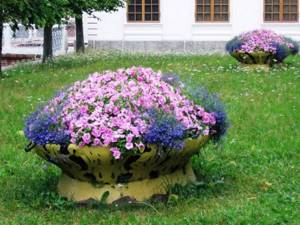
The composition of the soil for a raised bed can be improved by adjusting it to the needs of the petunias. To do this, peat, vermicompost, baking powder and hydrogel are added to the garden soil.
You can decorate a paved patio with small flower beds if you leave several planting pockets among the paving slabs. Bush large-flowered petunia is planted in them, which by mid-summer will completely cover the land gaps. Instead of bush petunia, you can use ampelous seedlings, including surfinias. They grow much faster than bush species, creating ground cover flowering cushions.

Small flower beds enliven a paved area and add additional color to the garden composition.
The bright flower bed is made from two varieties of petunias, dark pink and purple, planted in the shape of a circle. In the center is a small bush of rejected orange marigolds. The clearly defined shape of the flower bed is helped by low-growing coleus bushes planted as a border.
This composition uses plants whose height decreases from the center to the periphery. Therefore, the flowerbed itself is domed, creating a feeling of elevation above ground level.
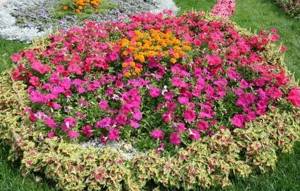
Floral arrangement of sun-loving annuals: petunias, marigolds and coleus
Petunia is a plant that grows well indoors, that is, in various containers and flowerpots. This property made it possible to create multi-tiered vertical flower beds from petunias, which are “assembled” from several individual elements. For example, it is easy to make such a flowerbed from a wooden screen on which horizontal containers with petunias are fixed vertically. It can also be a flower tower, consisting of planting sections piled on top of each other.
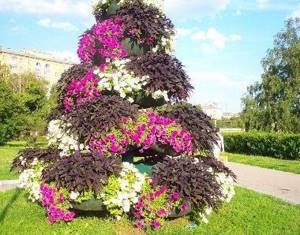
Chic vertical flowerbed of ampelous petunias and morning glory sweet potatoes
A variation of such a flower bed of petunias can be several large flowerpots attached to one base. For example, on an arched metal frame.
Containers for hanging petunias must be spacious and have drainage holes
Growing petunias in containers is more difficult than growing them in open ground. This is due to the limited amount of soil that the plant has to put up with. It is believed that for normal development, bush petunias need at least 2 liters of soil mixture, and hanging petunias - at least 3-4 liters. Some modern series of ampelous petunias grow lashes of 1-1.5 m, so you need to provide containers with a volume of 5-10 liters for them. The series “Typhoon”, “Tornado”, “Opera” and others are characterized by such gluttony.
For more information about vertical gardening using petunias, see here:
Advantages and disadvantages
Vertical flower beds have some advantages:
- they are quite beautiful, they can be used to decorate the landscape design of the area in front of the house;
- take up little space;
- they can be moved;
- minimal effort for tillage.
There are also some disadvantages:
- the need for frequent watering;
- due to the limited amount of soil, plants need regular additional feeding;
- The soil freezes heavily during the cold season.
Be that as it may, vertical flower beds are an excellent design solution for the garden and harmonize wonderfully with the landscape.

Proper petunia seedlings - how to grow

Most varieties of petunia are quite unpretentious. Even if, with the onset of warm weather (March-April), you sow the seeds in open ground and provide regular watering, it will grow and bloom. But if you want to get lush, well-groomed bushes, then you will have to try a little, “conjure” a small seed.
Methods for planting petunia seeds:
- The simplest option is sowing in a shallow container or box. The seeds are not poured in doses (by eye). The most important rule is not to deepen it.
- The use of peat tablets gives excellent results in growing seedlings - it is very convenient and practical. Pre-soak each tablet, place one pelleted seed or 2-3 regular ones there. Petunia seedlings in peat tablets do not require subsequent diving. With this method of planting, the bushes (along with the tablets) are subsequently replanted.
- Cassettes for seedlings are also convenient; growing with their help does not involve picking seedlings. Thus, each seed is placed in an individual cell (20 or 50 ml), and after 20-30 days it is transplanted into a pot, where the petunia can grow until the first flowers appear.
- It is also practiced to sow seeds in the snow. A layer of ordinary clean street snow is laid on top of the soil, and seeds are poured on top. When the snow melts, it is absorbed, automatically attracting the seeds to the ground (to the required depth).
Regardless of the method of sowing, the seedlings need the correct temperature (+23... - +25°C), covering with film, and timely watering.
Typically, petunia seeds are sown taking into account the variety group (March 20th) in order to obtain flowering bushes by the beginning of summer. If you want to see flowering earlier, it is better to start sowing in late January - early February.
Nutritious, loose soil with good moisture-retaining properties is suitable for it. Strongly acidic or alkaline soil mixtures should be avoided.
Against the background of the story about the details of growing petunia, it is still worth mentioning the possibility of purchasing ready-made seedlings. There are different cases: someone simply does not have enough time to engage in this process, but they really want to have a fragrant flower.
For such cases, petunia seedlings are sold, which can be bought at the market, store, florist center, even online store.
Planting petunia in open ground
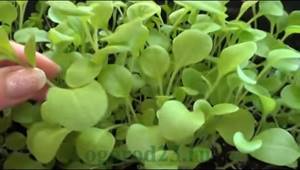
This flower loves loamy, fertile soils. If you add compost or humus to the flowerbed site before planting, the petunia will bloom more actively and more luxuriantly. Make sure that the place for the plants is well lit by the sun. Most often, bushes are planted around the 20th of April (in Kuban), after the frosts are left behind.
To plant, seedlings need to be well watered so that they can be easily removed from the pot. Plant it in a flowerbed together with a lump of soil. The step between the bushes should be approximately 30-40 cm. Then the plants are watered and mulched again (the next day).

Planting seedlings
Aftercare for petunia includes:
- regular watering,
- loosening the soil,
- getting rid of weeds.
However, the most important factor is fertilizing with complex and organic fertilizers, which must be introduced on the 8th day after planting. Potassium supplements need to be done every 10 days. We advise you to continue them until August inclusive. You can also use organic fertilizers, such as humus.

